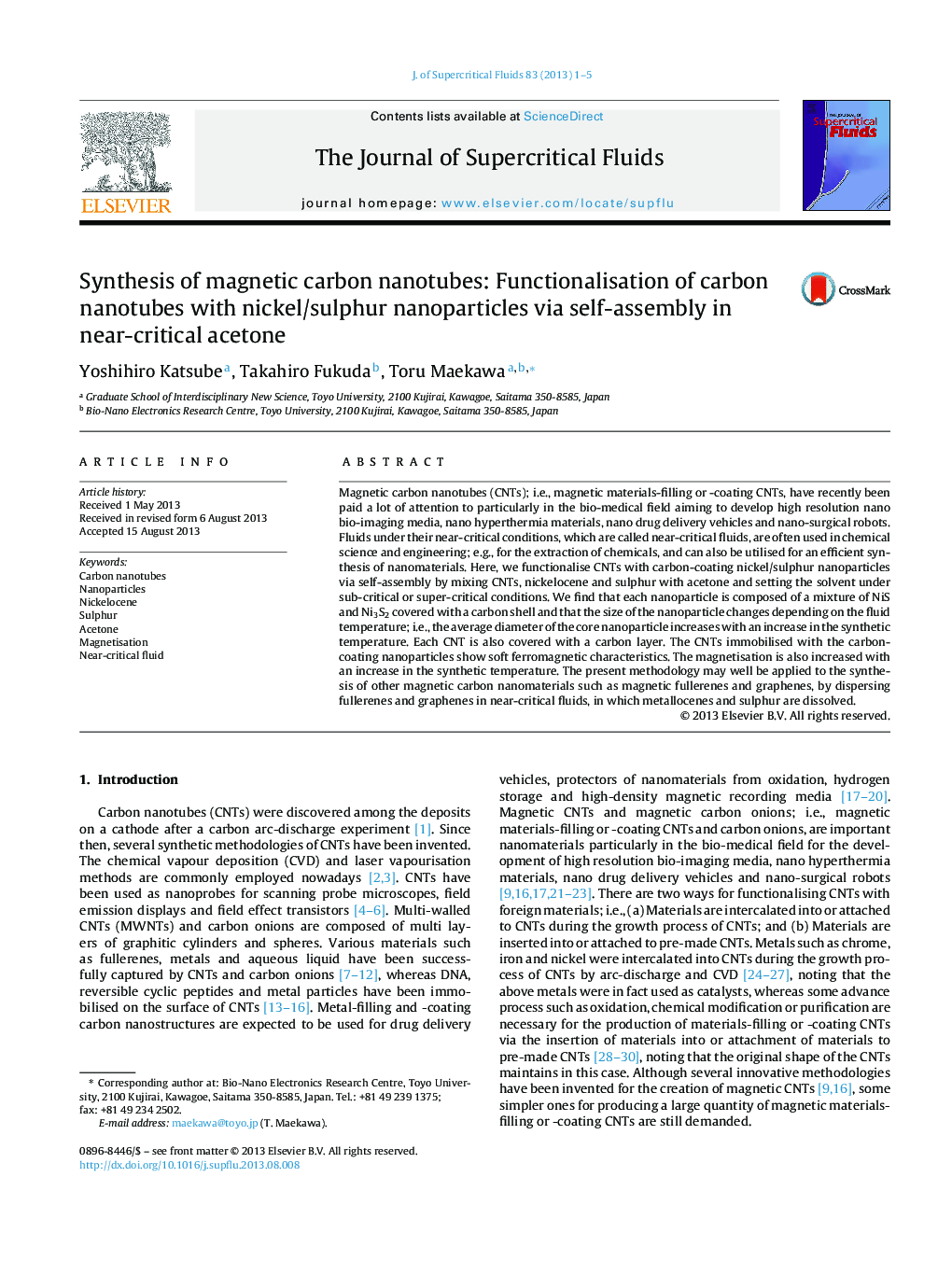| Article ID | Journal | Published Year | Pages | File Type |
|---|---|---|---|---|
| 230598 | The Journal of Supercritical Fluids | 2013 | 5 Pages |
•We immobilise magnetic nanoparticles on CNTs in near-critical acetone.•Each nanoparticle is composed of NiS and Ni3S2 covered with a carbon shell.•The magnetic CNTs show soft ferromagnetic characteristics.
Magnetic carbon nanotubes (CNTs); i.e., magnetic materials-filling or -coating CNTs, have recently been paid a lot of attention to particularly in the bio-medical field aiming to develop high resolution nano bio-imaging media, nano hyperthermia materials, nano drug delivery vehicles and nano-surgical robots. Fluids under their near-critical conditions, which are called near-critical fluids, are often used in chemical science and engineering; e.g., for the extraction of chemicals, and can also be utilised for an efficient synthesis of nanomaterials. Here, we functionalise CNTs with carbon-coating nickel/sulphur nanoparticles via self-assembly by mixing CNTs, nickelocene and sulphur with acetone and setting the solvent under sub-critical or super-critical conditions. We find that each nanoparticle is composed of a mixture of NiS and Ni3S2 covered with a carbon shell and that the size of the nanoparticle changes depending on the fluid temperature; i.e., the average diameter of the core nanoparticle increases with an increase in the synthetic temperature. Each CNT is also covered with a carbon layer. The CNTs immobilised with the carbon-coating nanoparticles show soft ferromagnetic characteristics. The magnetisation is also increased with an increase in the synthetic temperature. The present methodology may well be applied to the synthesis of other magnetic carbon nanomaterials such as magnetic fullerenes and graphenes, by dispersing fullerenes and graphenes in near-critical fluids, in which metallocenes and sulphur are dissolved.
Graphical abstractFigure optionsDownload full-size imageDownload as PowerPoint slide
